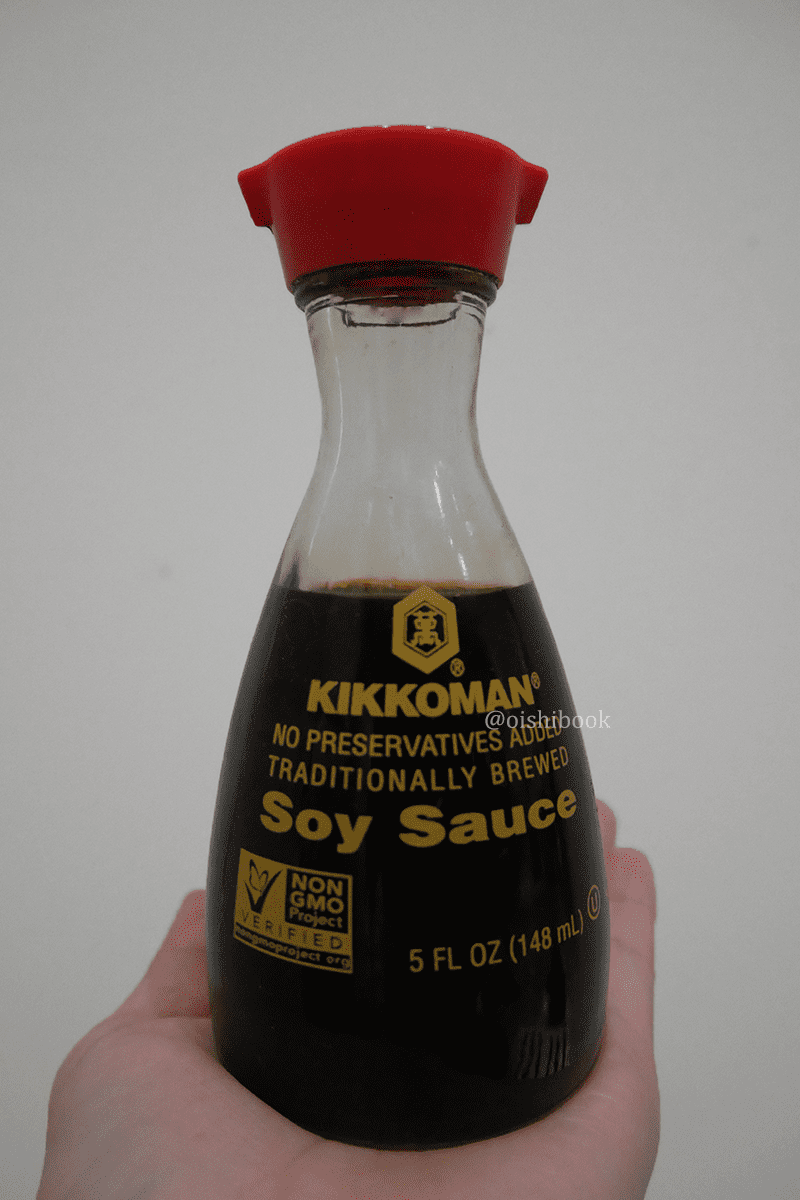Soy Sauce is a widely used ingredient perfect for adding an Umami taste to your dishes. It contains a delicious natural flavor and is used for many dishes in Japan. In this article, you can learn all about one of the most important ingredients in Japanese cooking, Soy Sauce.

What is Soy Sauce (Shoyu)?
If you have eaten Asian food, you would have noticed that they always come with a black sauce. This is Soy Sauce and in Japanese we call it Shoyu.
Soy Sauce is originally from China. But, I can confidently say that Soy Sauce is the most widely used ingredient in Japan.
How is Soy Sauce made?
Soy Sauce is made of soybeans, wheat, and salt.
The steps to make Soy Sauce
- Mold (Aspergillus) is added to Roasted soybeans and crushed wheat to make Shoyu Koji for a couple of days.
- Liquid salt brine is added to make “Moromi”.
- The “Moromi” is allowed to brew and ferment again and again for a couple months.
- Once that’s completed, soy sauce is heated and pasteurized, then bottled.
The fermentation process can take a minimum of 6 months, after which the Moromi mash can be pressed to obtain the actual sauce. Depending on the brewer, this process can even take up to 3 years.
Is Soy Sauce good or bad for health?
Soy Sauce is good in certain amounts. It has the power to kill E coli in a short time. This is because lactic acid, other organic acids, and salt work together very well. Also, Soy Sauce contains amino acids that are essential to the human body.
Conversely, Soy Sauce contains a lot of salt. Because of that, people who have high blood pressure or heart problems have to reduce how much Soy Sauce they have. The Ministry of Health, Labor, and Welfare recommends an average amount of 8g per day for males and 7g per day for females.
Does Soy Sauce expire?
Yes It can expire. If you don’t open a Soy Sauce bottle, the bottle should say when you should use it by. After you open, it is usually good for about one month before it expires.
What is the difference between Soy Sauce and Worcestershire sauce?
Worcestershire sauce is made from a variety of ingredients such as anchovies, molasses, and vinegar. The taste is sweet, sour, and a little bit spicy. It is best used just a few drops at a time and is great for European style foods such as meat stews and casseroles.
Soy Sauce is mostly made from beans and wheat. The flavor is a bit salty and very umami, and it is used in some way in almost all Asian cooking.
In conclusion, they are totally different!
How many types of Soy Sauce exist?
There are 5 types of Soy Sauce according to the Japan Agricultural Standards (JAS).
5 types of Soy Sauce
- Koikuchi shoyu (濃口醤油, dark-colored soy sauce)
- Usukuchi shoyu (淡口醤油, light-colored soy sauce)
- Tamari shoyu (たまり醤油)
- Saishikomi shoyu (再仕込み醤油)
- Shiro shoyu (白醤油)
Koikuchi soy sauce is the most common Japanese soy sauce!
1. Koikuchi shoyu (濃口醤油, dark-colored soy sauce)
Koikuchi Soy Sauce is the most common Japanese Soy sauce. 84% of the world’s volume is produced in Japan! It is made from an even mixture of soybeans and wheat and it has a 16% salt content.
It has deep Umami flavor with a little bit of acidity. This Soy Sauce can be used in anything.
2. Usukuchi shoyu (淡口醤油, light-colored soy sauce)
Usukuchi Soy Sauce has a much lighter color and higher salt content than Koikuchi Soy Sauce. 13% of the world’s volume is produced in Japan and it has an 18 -19% salt content.
Usukuchi Soy Sauce is also widely used in Japan but mostly in Western Japan.
3. Tamari shoyu (たまり醤油)
Tamari Soy Sauce has a thicker texture, rich umami taste, and fragrance. The volume produced in Japan is approximately 1.5% and it has a 16% salt content.
Tamari Soy Sauce is mostly used in the Aichi, Mie, and Gihu areas of Japan.
4. Saishikomi shoyu (再仕込み醤油)
Sashikomi Shoyu has a thicker color, flavor, and texture. It has sweetness as well. The volume produced in Japan is approximately 1.0% and it has a 16% salt content.
Sashikomi Shoyu is mostly used in the Chugoku and Kyushu areas of Japan.
5. Shiro shoyu (白醤油)
Sashikomi Shoyu has less umami flavor than the other types of Soy Sauce because it is made with very little soybeans. The volume produced in Japan is less than 1.0% and it has an 18% salt content.
Sashikomi Shoyu is mostly used in the Aichi area of Japan.
Recipes that use Soy Sauce

There are tons of Japanese foods that require Soy Sauce.
[…] Soy Sauce […]